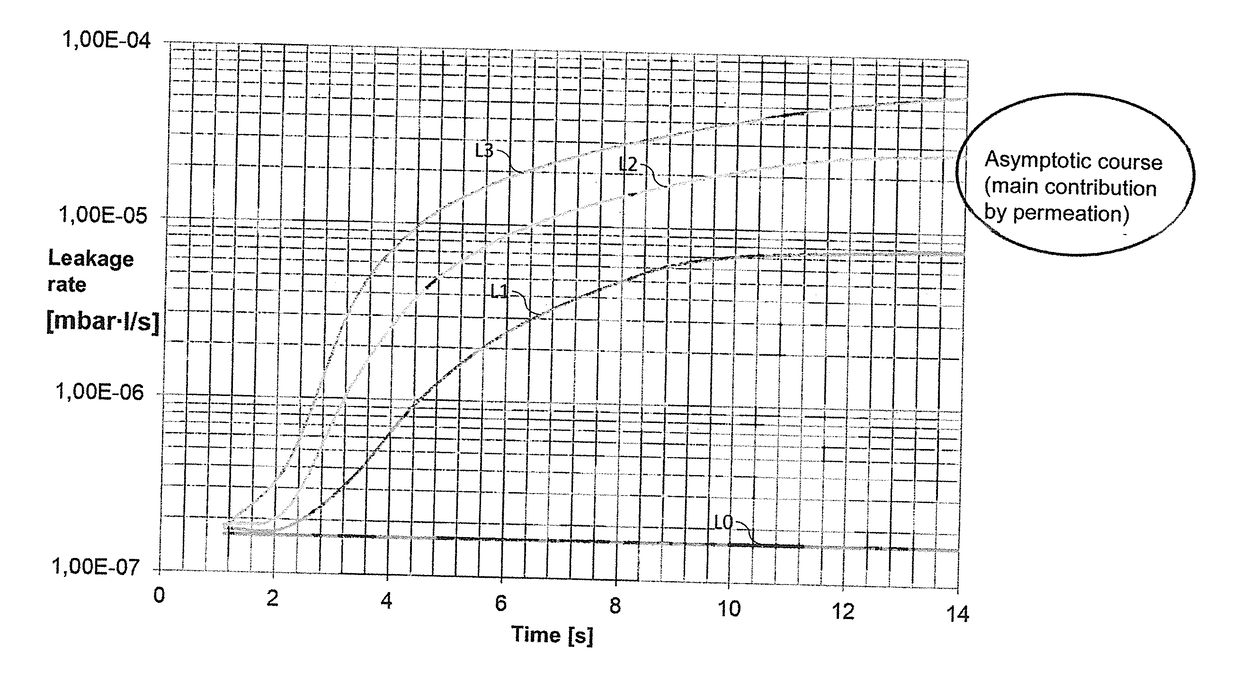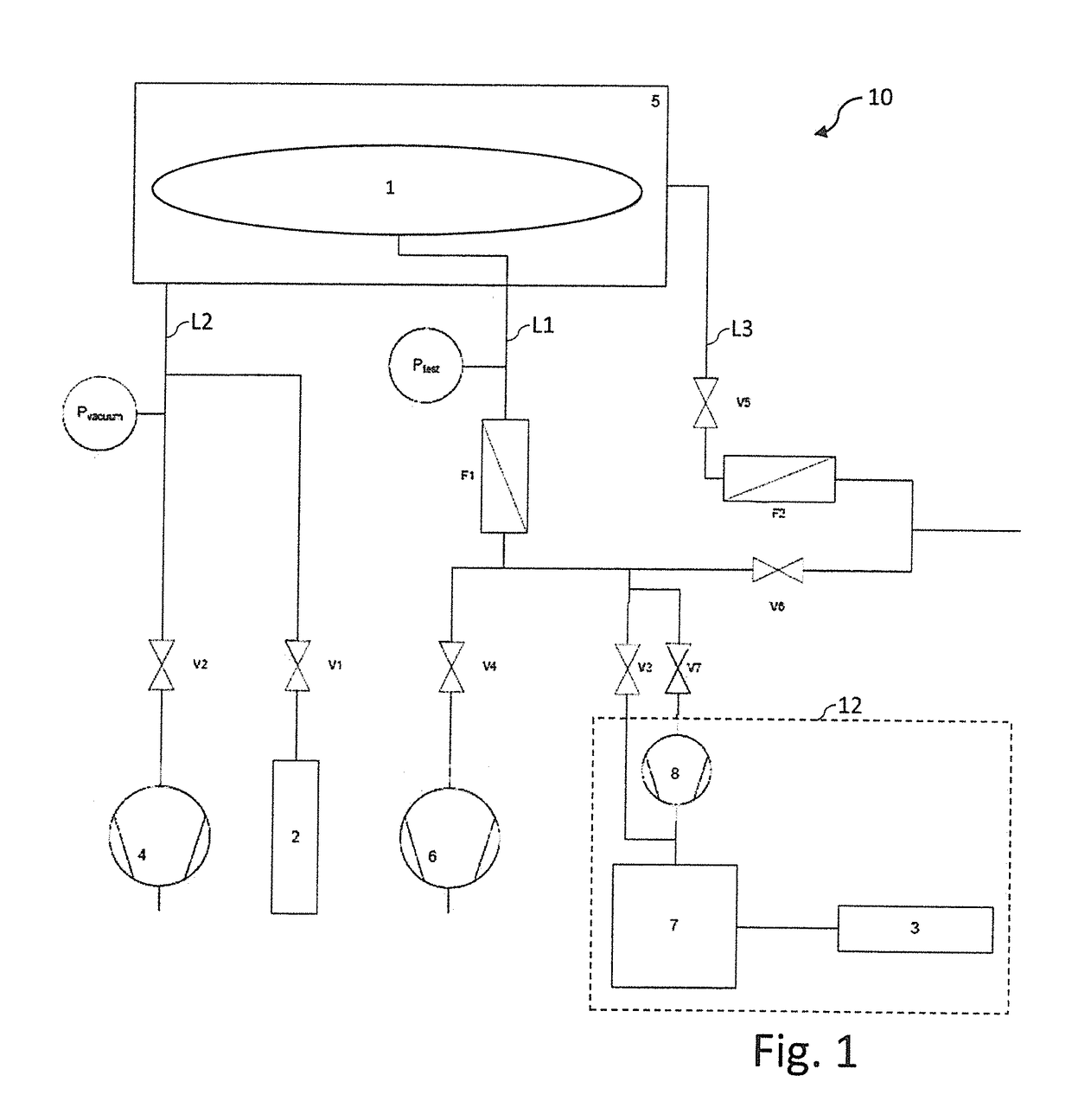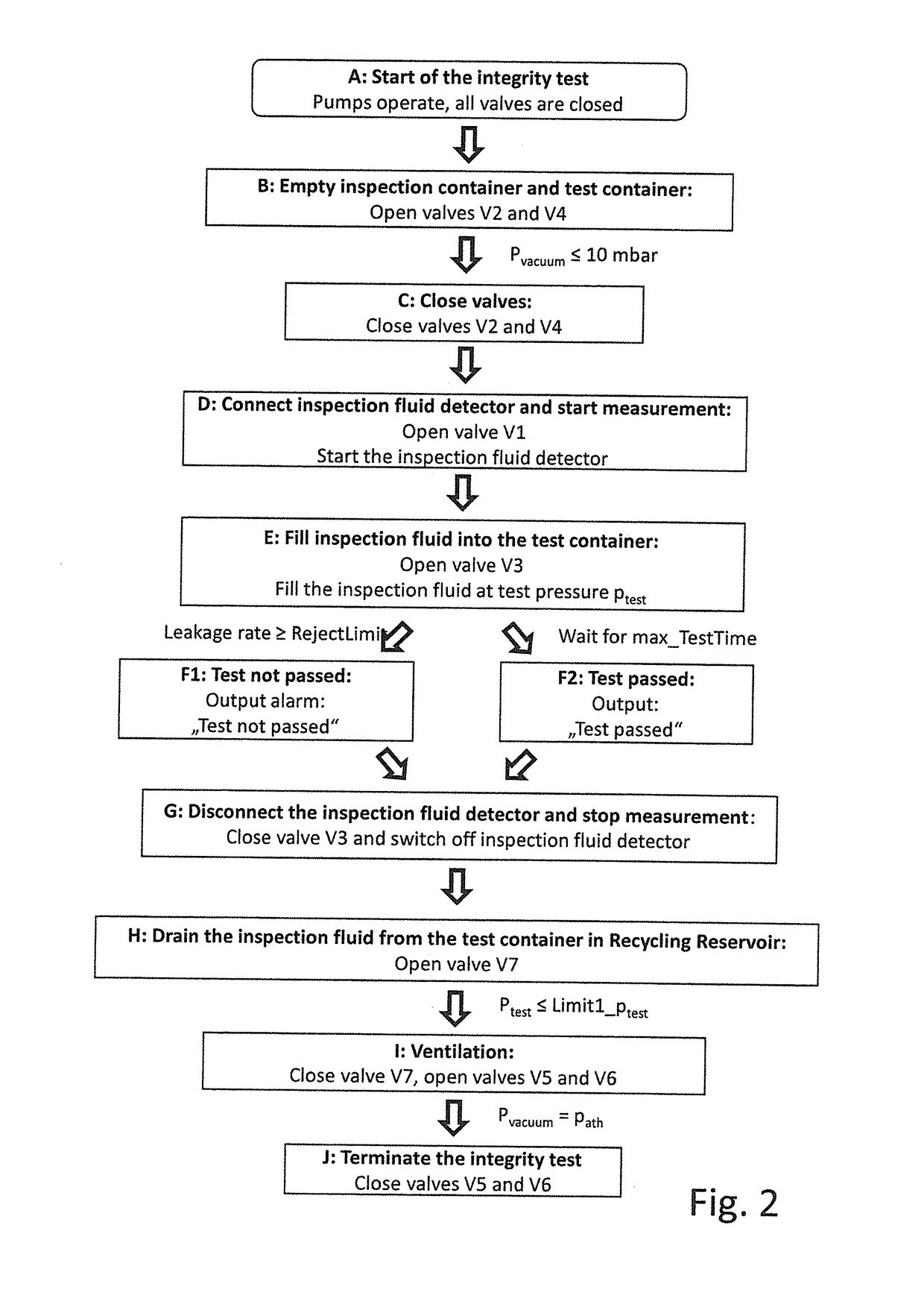Method and apparatus for an integrity test of a test container
- Summary
- Abstract
- Description
- Claims
- Application Information
AI Technical Summary
Benefits of technology
Problems solved by technology
Method used
Image
Examples
Embodiment Construction
[0059]FIG. 1 shows a schematic representation of an inventive test device 10 according to a preferred embodiment for carrying out an integrity test on a flexible test container 1.
[0060]The test device 10 comprises an inspection container 5, which is preferably designed to be openable and closable in a fluid-tight way. The inspection container 5 may be dimensionally stable and have metal and / or plastic walls, for example. The inspection container 5 is preferably designed and provided to withstand negative pressure, in particular a vacuum, in its interior. “Negative pressure” means that the pressure in the interior of the inspection container is smaller than outside the inspection container. For example, the inspection container 5 may be designed to withstand a pressure in the interior e.g. between about 10−7 mbar and about 100 mbar and an atmospheric pressure of about 1 bar outside the test container, i.e. to remain dimensionally stable and / or fluid-tight substantially at such a pres...
PUM
 Login to View More
Login to View More Abstract
Description
Claims
Application Information
 Login to View More
Login to View More - R&D
- Intellectual Property
- Life Sciences
- Materials
- Tech Scout
- Unparalleled Data Quality
- Higher Quality Content
- 60% Fewer Hallucinations
Browse by: Latest US Patents, China's latest patents, Technical Efficacy Thesaurus, Application Domain, Technology Topic, Popular Technical Reports.
© 2025 PatSnap. All rights reserved.Legal|Privacy policy|Modern Slavery Act Transparency Statement|Sitemap|About US| Contact US: help@patsnap.com



